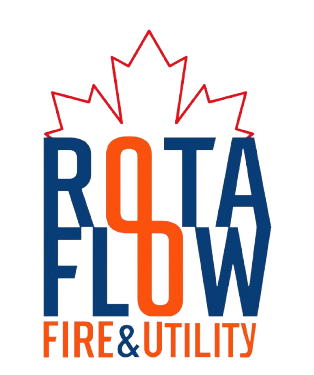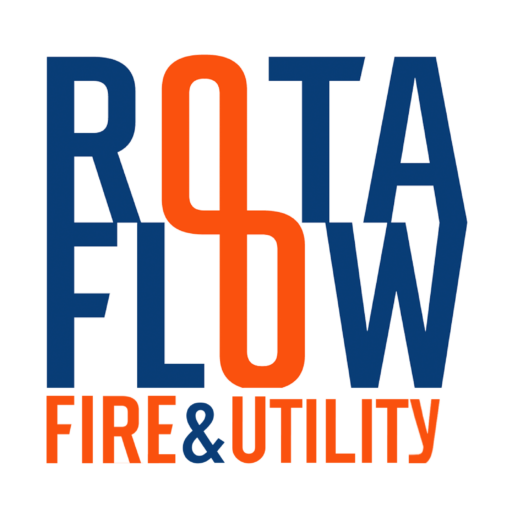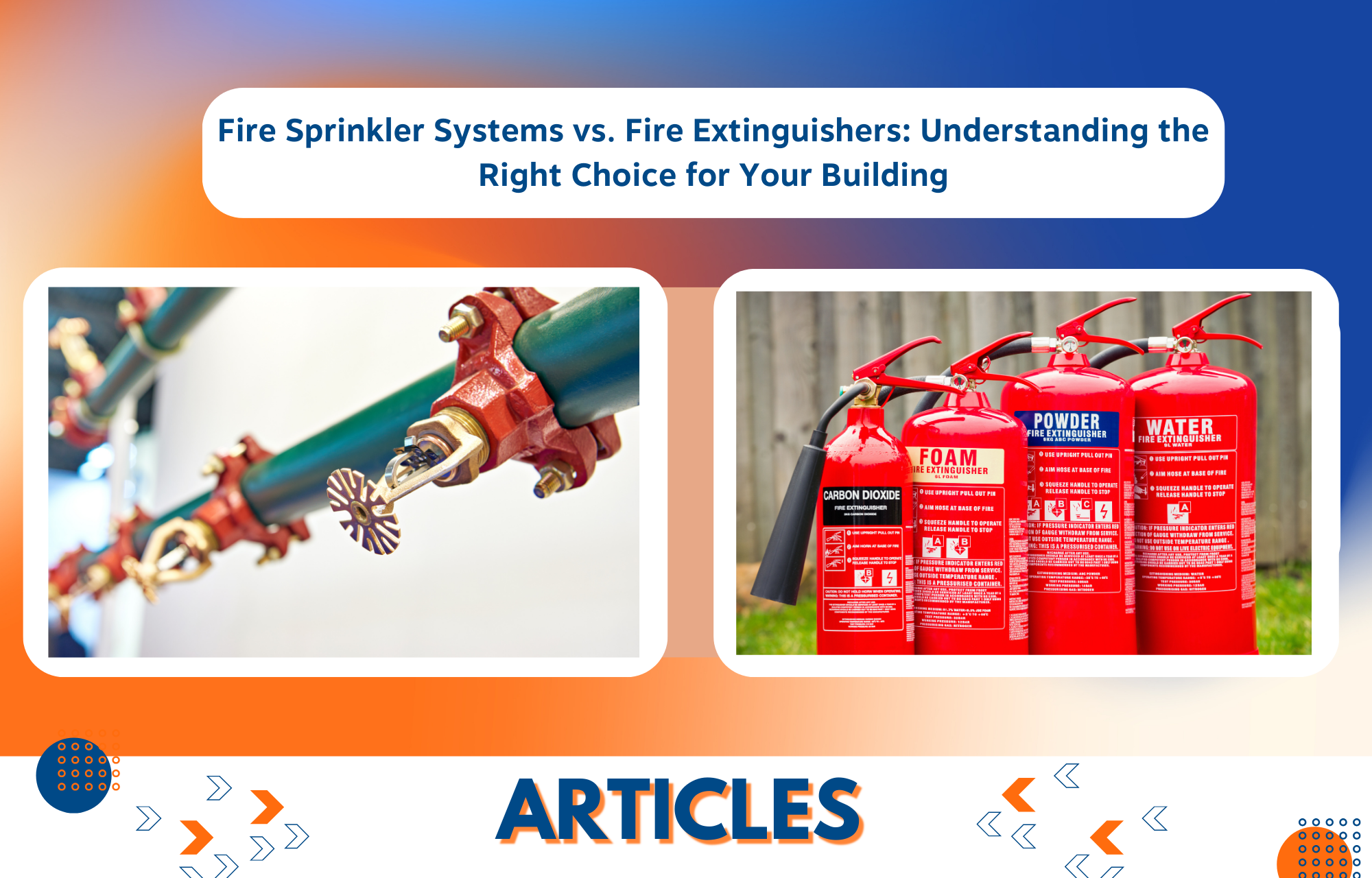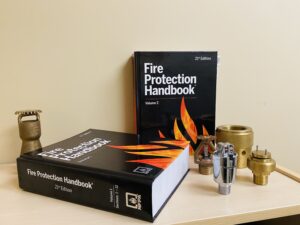Introduction: Fire safety is the first concern for managers and owners of buildings. Appropriate fire safety precautions can make all the difference between a small annoyance and a catastrophic loss. Fire sprinklers and fire extinguishers are two absolutely vital parts of fire safety infrastructure. But what distinguishes them, and which one would be appropriate for your protecting your building, assets and life.
Serving Edmonton and Fort McMurray, Rotaflow Fire & Utility is a reputable fire protection and life safety specialist that delves deeply into the functions and optimal uses of both fire sprinklers and extinguishers, guiding you in your decisions for the safety of your building.
Fire Sprinkler Systems: Automated Suppression of Fire
Fire sprinkler systems are a network of pipes linked to sprinkler heads across a structure. These heads feature either additional sensing systems or heat-sensitive throughout bulbs.
Advantages of Fire Sprinklers:
Sprinkler systems react quickly to a fire, especially in cases where inhabitants are uninformed or unable to react. This is absolutely vital for nocturnal crises or events requiring a quick response. Fire sprinkler systems do not require human interaction to function.
24/7 protection: Unlike fire extinguishers that call on human involvement, sprinklers offer continuous fire suppression all around-hour.
Large area coverage: Perfect for open floor designs, warehouses, and big commercial areas, a single sprinkler system may cover a great area.
Reduced property damage: Early fire extinguishment helps sprinkler systems greatly reduce any water damage from firefighting operations as well as fire damage.
Lower insurance premiums: Properly installed and maintained sprinkler systems may help buildings qualify for reduced fire insurance rates.
Appropriate Use for Fire Sprinklers:
Commercial buildings: Sprinkler systems have great occupant capacity and potential for fast fire spread, benefiting commercial buildings including office spaces, retail stores, warehouses, hotels, hospitals, and educational institutions.
Apartment buildings and multi-unit dwellings: Sprinkler systems give tenants—especially those on higher floors—an additional degree of protection in apartment buildings and multi-unit homes.
Residential care facilities: Because of their occupant vulnerability, hospitals, nursing homes, and assisted living homes call for strong fire protection.
Industrial application: Fire Sprinklers are also used in industrial applications such as deluge systems.
Fire extinguishers: hand-operated firefighting tools
Portable tools with firefighting ingredients, including dry chemical powder, foam, or water, are fire extinguishers. Operating an extinguisher calls for:
- Pull the pin to unlock the handle.
- Orient the nozzle toward the fire’s base.
- To release the extinguishing agents, squeeze the lever.
Advantages of fire extinguishers
Portable and flexible: Fire extinguishers can be positioned easily all around a building to enable a focused attack on minor fires.
User-operated: Anyone with appropriate instruction may fight an early-stage fire using a fire extinguisher.
Variety of extinguishing agents: Different kinds of extinguishers are made for different kinds of fires (Class A for regular combustibles, Class B for flammable liquids).
Ideal Uses for Fire Extinguishers:
Supplemental protection: Particularly in places like server rooms with sensitive electronics where sprinkler systems might not be useful, fire extinguishers are great tools for people to contain minor fires before they spread.
Early Intervention: Having a quickly accessible fire extinguisher lets one react to a fire before it gets out of hand.
Own vehicles: Maintaining a fire extinguisher in your vehicle will help with minor engine fires or road mishaps.
Understanding the Limitations
Although both fire sprinklers and extinguishers are vital fire protection devices, it’s important to know their limitations:
Limitations on fire extinguishers: They work only for small fires. For best use, they call for user training and the correct application technique. Refilling an extinguisher after use can be time-consuming and the extinguishing agent might not be appropriate for every sort of fire.
Limitations on Fire Sprinklers: Fire sprinklers may not be appropriate for all fire types, including those involving electrical equipment or volatile substances requiring specific extinguishing agents. A sprinkler head’s unintentional activation can also cause major water damage.
The Right Choice for Your Building
Combining fire sprinklers and extinguishers is usually the finest fire safety plan available. Here’s a breakdown to guide your decision:
- Give fire sprinkler systems first priority if you want thorough, automatic fire suppression in large areas.
- Think of carefully placed fire extinguishers as both a complement to sprinkler systems and a focused intervention tool against minor fires.
Note- Buildings often contain both systems.
Rotaflow Fire & Utility: Your Trusted Fire Protection Partner
Our qualified fire protection experts at Rotaflow Fire & Utility provide a wide spectrum of services to guarantee the safety of your facility, including:
Fire sprinkler system design and installation: Our professionals can design and install a code-compliant sprinkler system catered to the particular layout and fire threats of your building.
Fire sprinkler system maintenance and inspection: Regular maintenance and inspections help to guarantee that your sprinkler system runs fault-free should a fire break out.
Fire extinguisher selection and placement: We will assist you in selecting the appropriate type and quantity of fire extinguishers for your building and in arranging them for simple access.
Fire extinguisher training: Our team provides programs for fire extinguisher training to teach your employees the correct extinguisher operation and fire safety procedures.
Fire code compliance: We can walk you through fire safety codes and make sure your structure satisfies all required fire protection criteria.
Remember, everyone has a shared responsibility for fire safety. Working with a reputable fire protection firm such as Rotaflow Fire & Utility will help you develop a thorough fire safety strategy for protecting your assets, staff, and structure.
We proudly service the areas of Edmonton, Calgary, and Fort McMurray.
Members of CFAA and ULC, RCI Fire and Utility specializes in providing their clients with the whole spectrum of fire protection services.
Rotaflow is completely accredited as an Integrated Systems Testing Service Provider under (CAN/ULC S1001). Apart from complete code-mandated inspections of fire alarms, we provide a whole range of inspections for fire protection, including extensive fire suppression services including engineering, installation, fabrication, maintenance, 24-hour service, and hazard protection particular to the area (FM200 Inergen, FM200 Novec 1230, C02).
Let us together create a safer future!
Note: This article is for informative purposes only; it should not be used in place of expert fire safety recommendations. To design a fire safety strategy unique to your facility, always speak with a licensed fire protection specialist.
Courtesy: Haider Khan, EIT- Project Coordinator, Engineering, Rotaflow.



